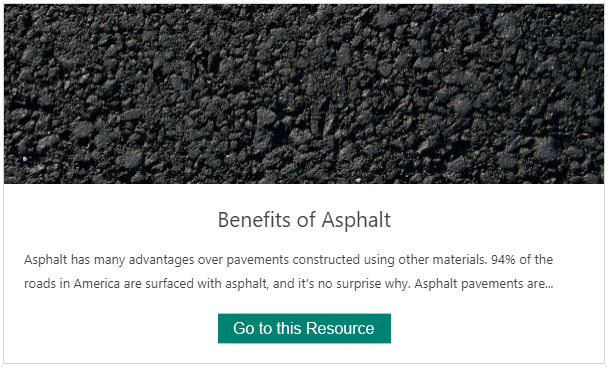Everything about A1 Professional Asphalt & Sealing Llc
Everything about A1 Professional Asphalt & Sealing Llc
Blog Article
The A1 Professional Asphalt & Sealing Llc PDFs
Table of ContentsWhat Does A1 Professional Asphalt & Sealing Llc Do?Rumored Buzz on A1 Professional Asphalt & Sealing LlcA Biased View of A1 Professional Asphalt & Sealing LlcThe smart Trick of A1 Professional Asphalt & Sealing Llc That Nobody is Talking AboutThe Ultimate Guide To A1 Professional Asphalt & Sealing Llc

The oil in an automobile engine is not just oil. It consists of a variety of additives to improve the lorry's performance. These include polymers, thickness modifiers, warmth stabilizers, added lubes, and wear ingredients. The REOB includes all the ingredients that were in the waste oil as well as the wear steels from the engine (primarily iron and copper).
Nonetheless, by making lots of blends making use of various REOB samples and various asphalt binders, the variations greatly can be balanced out. Several States offered samples of well-known REOB composition to TFHRC scientists, who evaluated the samples to compare the percent of added (understood) REOB to the located (examined) quantity. The evaluations revealed a similar percentage of added and located REOB.
The Greatest Guide To A1 Professional Asphalt & Sealing Llc
None of those States realized that the asphalt they were purchasing had REOB. One State insisted its examples had no REOB - https://alasphaltseal.wixsite.com/a1asphaltseal/post/a1-professional-asphalt-repairs-enhancing-roads-with-excellence.
Of the 1,532 samples examined, 12 percent had REOB, and some included significantly high levels of it at 1020 percent. The greatest level was 34 percent in a sample from Texas, which TxDOT had made use of in a patching compound. This screening additionally exposed the existence of phosphoric acid in 11 percent of the examples, and 2 percent included ground tire rubber.
2 years back at TRB's annual meeting, the Federal researchers held an REOB workshop and provided the findings of their lab analyses to a standing room-only group. Some agencies do not particularly outlaw REOB, they do enforce physical examinations that preclude its useeffectively a restriction. Others do not ban it by specification, yet have arrangements with asphalt suppliers to avoid the usage of REOB
Facts About A1 Professional Asphalt & Sealing Llc Revealed
A handful do allow REOB, some within particular limitations. Ohio and Texas restriction levels to less than 5 percent of the asphalt. To develop a trusted test technique that all States can use, the TFHRC researchers set up a round-robin test plan. The individuals are 11 State highway companies (Illinois, Massachusetts, Minnesota, Mississippi, Montana, North Carolina, Oklahoma, South Carolina, Texas, Vermont, and Wyoming), 2 independent screening laboratories, the Ministry of Transportation in Ontario, Queen's College in Ontario, and an Ontario paving contractor.
In total amount, the scientists prepared and shipped 720 blends. The individuals are examining the samples separately making use of the guidelines offered by the TFHRC scientists. The round-robin testing is nearly finished, and TFHRC remains in the process of collecting the results. The output will certainly be a suggested AASHTO examination approach that any kind of State can take on and make use of (a1 asphalt).
The pavement with REOB, which is situated 0.6 mile (1 kilometer) from the sidewalk without REOB, has the same subgrade, website traffic thickness, and environment. The segment of Highway655 with 5 to 10 percent REOB revealed significant cracking. In this example, the presence of REOB was the identified reason of fracturing at a low temperatures.
"In our experience in Canada, even small amounts of 23 percent can be a trouble." In a similar way, an area of test pavement in Minnesota (MN1-4) discovered to consist of REOB also broke too soon. The sidewalk carried out well for the initial 3 to 4 years, however after that started to crack. This pavement is also subject to low temperatures.
Our A1 Professional Asphalt & Sealing Llc PDFs
The tests were not substantial, yet they showed that at levels of 6 percent or more, the tensile strength of the asphalt dropped dramatically. At a level of 3.5 percent REOB, the variation in the physical test approaches was more than the impact of REOB. Actually, it was hard for researchers to assess whether REOB was existing.

One binder parameter considered is the distinction between the reduced temperature level important specification temperature for rigidity (S) in the bending beam of light rheometer and the bending beam of light rheometer creep incline (m-value) noted as Tcritical. TC = TC (S) TC (m-value). Evaluation of this specification is still ongoing. 2 independent research teams, one from AASHTO and the various other from the Asphalt Institute, ended that even more research study is needed on using REOB in asphalt.
Previously, all asphalt testing gauged engineering residential properties such as rigidity. These examinations do disappoint what materials had actually been included to the asphalt. One sample gotten during the TFHRC research had an extremely strange evaluation. The sample had the following test results: Superpave PG 64-28 with a high temperature grade of 67.3 Tcritical on the flexing beam of light rheometer was 6.7 levels Celsius.

The Basic Principles Of A1 Professional Asphalt & Sealing Llc
These outcomes show there are weaknesses in the standard engineering screening procedures that might be exploited. The manufacturer might have a financial advantage and the product passes all the standardized examinations, yet the item may not be advantageous to ensuring long-term efficiency. To address this concern and the expansion of new asphalt additives and extenders, TFHRC is starting a study program to use portable spectroscopic devices, x-ray fluorescence spectroscopy, and Fourier change infrared spectroscopy to hop over to here enable analyses to be carried out in the field instead of having to take examples back to the lab.
Report this page